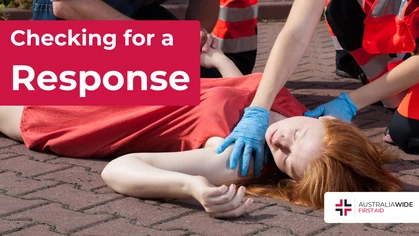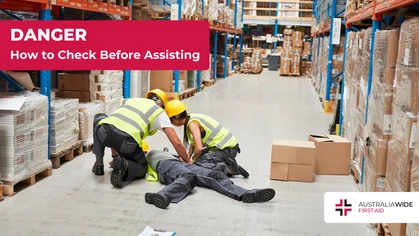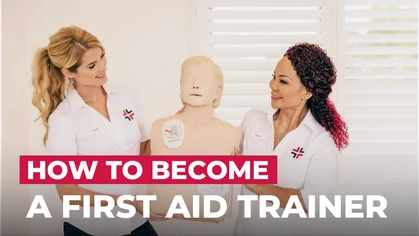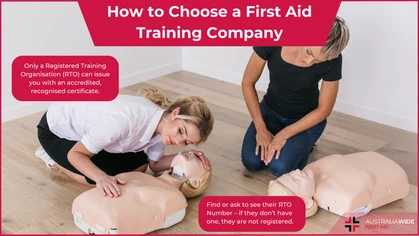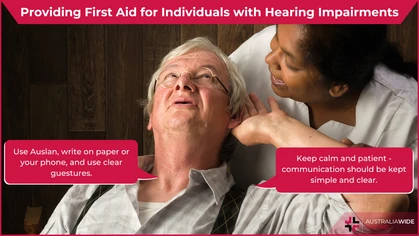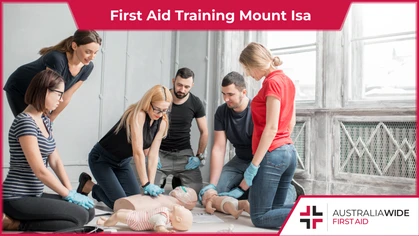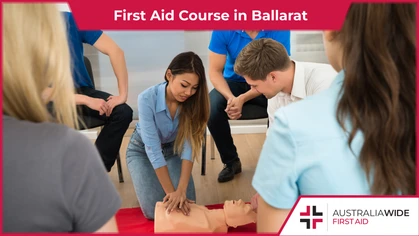What Is the Meaning and Importance of First Aid?

First Aid Training
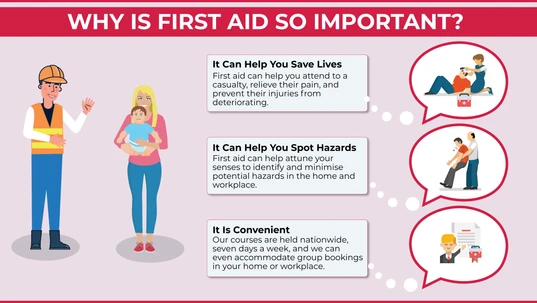
First aid is not just valuable in the workplace. It can help people become more attuned to potential hazards, to assess for the safest emergency response, and to prevent casualties from experiencing ongoing health complications.
First aid training is a requirement for many Australian workers, and it is considered a valuable addition to one's job application. People also undertake first aid training for personal reasons, such as wanting to keep their children out of harm's way, and to be of assistance to others. First aid training is recognised around the world as a meaningful skill that can help curtail the risk of serious injury and ongoing health complications. Australia Wide First Aid recognises the importance of first aid training. That is why we hold courses across the country that only comprise 2 to 5 hours of face-to-face learning, and a convenient e-Learning component.What Does First Aid Mean?
The importance of first aid training is recognised all over the world, and its capacity to make a difference cannot be overstated. When it comes to first aid, preserving life is the primary objective. However, it can also bring relief from crippling pain, and it can prevent medical conditions from deteriorating until more advanced care arrives. A first aider is often the first person at an emergency who can provide assistance. Administering first aid promptly and effectively can indelibly contribute to a patient's recovery. In fact, in an overwhelming number of emergencies, it has been the difference between life and death. Just last year, a 43 year-old father suffering from cardiac arrest was saved when a nearby 17 year-old stranger successfully used an automated external defibrillator (AED) to restart the former's heart. More life-changing CPR stories can be found in our Resource Library.Benefits of First Aid Training
First aid training gives you the knowledge and confidence to step in and help when an emergency occurs. By taking action straight away, you could save a life, or at least prevent a person from suffering permanent disability. After first aid training, you will become more attuned to assessing and enacting the safest emergency responses. Likewise, your senses will be alert to danger, and you will know how to identify and minimise potential hazards in the home and workplace. This is important, as many common causes of hospitalised injuries happen in the home, including falls, accidental poisoning, and contact with objects. See the Australian Institute of Health and Welfare's fact sheets on injury for more details.When Is First Aid Needed?
In many lines of work, first aid certification is a condition of employment. The workplace looms large, and is second only to the home, when it comes to threats to our health. First aid is an essential requirement in any workplace where employees toil in close proximity to high-powered machinery. First aid training also figures into the responsibilities of any business or community operation that involves mass gatherings. This includes transport services, swimming facilities, education and shopping centres, and many more. In fact, according to SafeWork NSW, any "person conducting a business or undertaking" has a legal responsibility to ensure adequate first aid provisions for their workers. This is unsurprising, as there were almost 200 worker fatalities in Australia in 2020. More key statistics relating to Australia's work, health, and safety can be found on the Safe Work Australia website.What's Involved in First Aid Certification?
When you successfully complete the required units of a First Aid module, you will earn a Statement of Attainment. First aid certificates issued by Australia Wide First Aid (RTO 31961) are recognised throughout every state and territory of Australia, as is the case when training with a Registered Training Organisation. It is important to note, first aid procedures are revised from time to time to remain compliant with national guidelines, such as those of the Australian Resuscitation Council (ARC). For this reason, and to ensure that your first aid knowledge does not fade over time, it is recommended that you renew your first aid certification regularly. First instance, it is recommended that HLTAID009 Provide cardiopulmonary resuscitation (CPR) (supersedes HLTAID001 Provide cardiopulmonary resuscitation) is renewed annually, while HLTAID011 Provide First Aid (supersedes HLTAID003 Provide first aid) and HLTAID012 Provide First Aid in an education and care setting (Supersedes HLTAID004 Provide an emergency first aid response in an education and care setting) should be renewed once every 3 years. HLTAID011 Provide First Aid is the minimum requirement for most workplaces, and so it is the most popular first aid course.Don't Wait to get Your First Aid Certificate
Life-threatening incidents happen everyday and without warning, such as asthma attacks, cardiac arrest, anaphylactic shock, choking, and many more. Knowing first aid can help you address these incidents, attend to casualties, and curtail the risk of more dire consequences. Considering how important first aid is to your friends, colleagues, family, and the wider community, first aid training is relatively inexpensive. This is especially true when you factor Australia Wide First Aid's Best Price Guarantee into the equation. Likewise, we can accommodate Group First Aid training in a variety of settings, including the home and workplace. This means we can tailor our courses to address the health and safety issues that are specific to your circumstances. To find a first aid course near you, simply head to our Locations page.
Originally published at
https://www.australiawidefirstaid.com.au/resources/what-is-the-meaning-and-importance-of-first-aid
as part of the Australia Wide First Aid Articles Library
